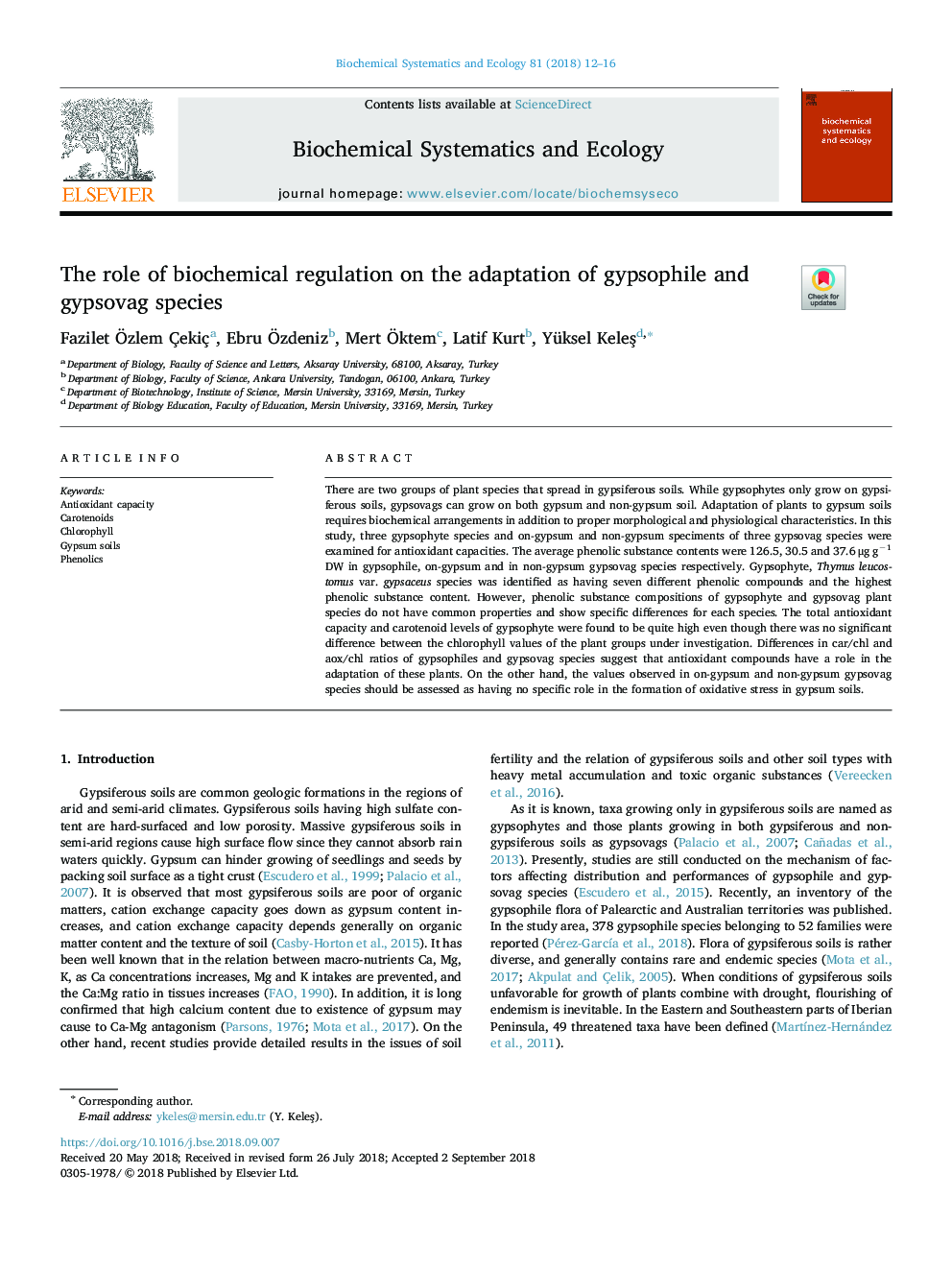| کد مقاله | کد نشریه | سال انتشار | مقاله انگلیسی | نسخه تمام متن |
|---|---|---|---|---|
| 10141160 | 1646058 | 2018 | 5 صفحه PDF | دانلود رایگان |
عنوان انگلیسی مقاله ISI
The role of biochemical regulation on the adaptation of gypsophile and gypsovag species
ترجمه فارسی عنوان
نقش تنظیمات بیوشیمیایی در سازگاری گونه های گیسوفیل و گچوژوج
دانلود مقاله + سفارش ترجمه
دانلود مقاله ISI انگلیسی
رایگان برای ایرانیان
کلمات کلیدی
ظرفیت آنتی اکسیدان، کاروتنوئیدها، کلروفیل، خاک های گچ، فنلیک،
موضوعات مرتبط
مهندسی و علوم پایه
شیمی
شیمی آلی
چکیده انگلیسی
There are two groups of plant species that spread in gypsiferous soils. While gypsophytes only grow on gypsiferous soils, gypsovags can grow on both gypsum and non-gypsum soil. Adaptation of plants to gypsum soils requires biochemical arrangements in addition to proper morphological and physiological characteristics. In this study, three gypsophyte species and on-gypsum and non-gypsum speciments of three gypsovag species were examined for antioxidant capacities. The average phenolic substance contents were 126.5, 30.5 and 37.6â¯Î¼gâ¯gâ1 DW in gypsophile, on-gypsum and in non-gypsum gypsovag species respectively. Gypsophyte, Thymus leucostomus var. gypsaceus species was identified as having seven different phenolic compounds and the highest phenolic substance content. However, phenolic substance compositions of gypsophyte and gypsovag plant species do not have common properties and show specific differences for each species. The total antioxidant capacity and carotenoid levels of gypsophyte were found to be quite high even though there was no significant difference between the chlorophyll values of the plant groups under investigation. Differences in car/chl and aox/chl ratios of gypsophiles and gypsovag species suggest that antioxidant compounds have a role in the adaptation of these plants. On the other hand, the values observed in on-gypsum and non-gypsum gypsovag species should be assessed as having no specific role in the formation of oxidative stress in gypsum soils.
ناشر
Database: Elsevier - ScienceDirect (ساینس دایرکت)
Journal: Biochemical Systematics and Ecology - Volume 81, December 2018, Pages 12-16
Journal: Biochemical Systematics and Ecology - Volume 81, December 2018, Pages 12-16
نویسندگان
Fazilet Ãzlem Ãekiç, Ebru Ãzdeniz, Mert Ãktem, Latif Kurt, Yüksel KeleÅ,
